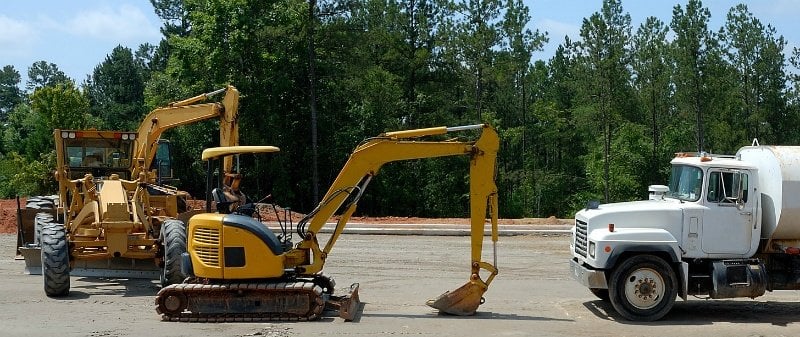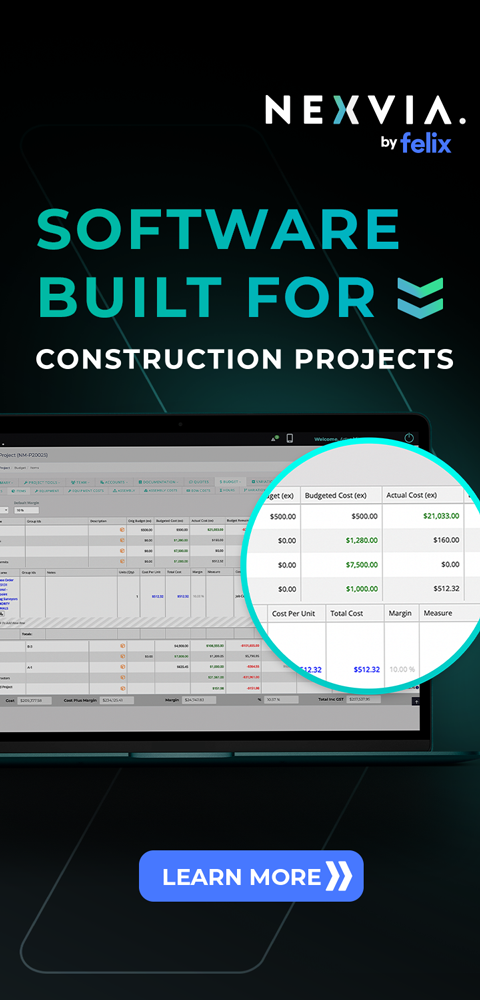Top tips for the building and construction industry to get EOFY ready in 2017!

With the end of the financial year fast approaching it is always a busy time in building and construction.
With this in mind we have tried to break down what you need to do by 30 June to ensure your business is prepared.Three big things to be aware of when doing your planning this year are:
- The reduction in the company tax rate to 27.5% for businesses meeting certain turnover thresholds,
- The increase in the turnover threshold from $2 million to $10 million to qualify as a Small Business Entity from 1 July 2016, and
- The budget repair levy will end this financial year reducing the top tax bracket from 49% to 47% on 1 July.
Certainly step one in tax planning this year is to understand what your corporate tax rate will be for the year. This requires you to consider the turnover of your business and any related businesses for the current financial year.
A summary of the tax rates and the year you will trigger them are as follows:
| Year | Turnover | Tax Rate |
| 30 June 2017 | < $10 million turnover | 27.5% |
| 30 June 2018 | < $25 million turnover | 27.5% |
| 30 June 2019 | < $50 million turnover | 27.5% |
The tax rate for other companies remains at 30%.
Once you know in which year the tax rate will affect you, you can then consider whether deferring income or bringing expenditure forward is right for you.
Here are 11 ways to prepare your building and construction business for the end of financial year and take advantage of the changes in the tax rates:
1. $20,000 new asset write-off for Small Business Entities
For those businesses with less than $10 million in turnover, you can claim an immediate deduction this year for assets costing less than $20,000. While the $20,000 threshold is normally going to be too low to help you buy a new utility, it’s likely to help with all the other types of equipment you need on site. As a bonus, this measure was also extended in the recent budget from 30 June 2017 to 30 June 2018.
2. Bring forward expenditure & Prepayments
Do you have any one off expenses coming up that you can bring forward into June? Spend the money now and get the deduction this year.
Even better if you are a small business with a turnover of less than $10 million, you can claim an up-front deduction for prepaid expenses for 12 months or less.
Your subscription to PlantMiner is an example of a marketing expense you could claim an up-front deduction for where you have less than $10 million in turnover. This and other business development expenses are worth considering to bring forward into June.
3. Defer income
Do you have any income that can be deferred until after 30 June? If so, you may wish to delay some invoicing until after 30 June. This strategy will be particularly effective for companies whose tax rate will reduce to 27.5% for the first time next year.
Given the current difficulties in the building and construction industry, you will need to think carefully about the cash flow impact of delaying any invoicing. However, the tax savings can be significant.
4. Make a call on potential bad debts
While no one enjoys writing off a bad debt, it is even worse when you consider that most businesses are paying income tax and GST on these invoices up until when they make this call. Thankfully, a deduction can be claimed for a bad debt where you make a commercial decision the debt is no longer recoverable. So go through your debtors list by 30 June and write off anything you do not realistically expect to receive. For example, companies in administration or liquidation.
Importantly, this does not prevent you from continuing to chase the debt.
5. Maximise your deductible super contributions
While super might seem boring at times, it is always a good thing to put money aside in the good years.
For the 2017 financial year the maximum deductible contributions that you can make are:
- $30,000 if less than 50 years of age
- $35,000 between 50 and 75 years of age.
The tax payable on deductible contributions to super is 15% for those earning less than $300,000 and 30% for those over $300,000. So with some careful planning where possible you should aim to fall below the $300,000 income limit.
[ From 1 July 2017 the maximum deductible contribution will be $25,000 per annum for all taxpayers and the income threshold where you will pay 30% on contributions will fall to $250,000 ]
6. Maximising Depreciation
When was the last time you reviewed your asset register? Are there tools and equipment that are no longer around? Where you scrap or no longer hold assets, you can claim an immediate deduction for any unclaimed depreciation.
Just as importantly, if you qualify as a Small Business Entity (SBE) you now get the following benefits:
- 100% write-off of assets costing less than $20,000,
- 15% depreciation on all other new assets in the first year,
- 30% depreciation in each of the following years, and
- If this is the first year that you qualify as an SBE then all existing assets held at 1 July 2016 can be depreciated at 30% moving forward
7. Why wait to pay your employee super liability
Most businesses pay their June quarter super liability just before the 28 July deadline to maximise their cash flow. The problem is that you don’t get the tax deduction until the year that the super is paid. So if you have some spare cash in your business, why not pay your employee super obligations by 30 June. In doing so you will bring forward your tax deduction into this financial year.
8. Are you considering paying bonuses to employees?
If you considering giving your staff a bonus for a job well done why not bring those deductions into the 2017 year. To do this you will need to show that you are legally committed to paying the bonus by 30 June 2017. Despite your business getting an up-front tax deduction you still don’t need to deduct PAYG withholding until you pay the cash to staff. In many cases this will be in July, meaning staff are only taxed on the income in their 2018 PAYG summary.
9. Consider paying out dividends
It may seem counter intuitive to bring forward your top up tax on the retained profits that you have accumulated in your company. However, this is the last year you will be able to frank a dividend at 30% if you are under the $25 million turnover threshold at 30 June 2017. For businesses under the $10 million threshold, the franking rate has already reduced to 27.5% from 1 July 2016. What this means is that you will effectively pay an extra 2.5% in top up tax by declaring a dividend.
10. Give thought to your trust distributions
For businesses operating out of trust structures it is vital that you make a valid distribution of income by 30 June. Thought should be given to the most tax effective way to distribute the income for the year. For instance, where you as the business owner are in the top tax bracket, it may be prudent to distribute business income to a company to cap your tax at 27.5% or 30%. This is even more useful when you consider that the top tax bracket is reducing to 47% on 1 July.
Importantly if you fail to validly distribute the income of the trust by 30 June, you face paying tax on that income at up to 49%.
11. Restructure to a company
With the ongoing reduction in the corporate tax rate, it may be worth re-thinking the structure that your business operates out of, if it is not already incorporated. There are a number of rules within the tax act that can readily allow a trust or individual to change its structure to a company with no income tax or capital gains tax being paid. This may be longer range tax planning. However, re-investing your earnings into a growing business on the lowest tax rate will make sense for many businesses.
As you can see, there is a lot to consider before 30 June, with the changes in tax rates for individuals and companies influencing these strategies. Take the time before 30 June to ensure that your tax affairs are in order so that you do not pay more tax than you have to.
 businessDEPOT Building & Construction experts.
businessDEPOT Building & Construction experts.
Michael Garrone | 07 3193 3002 | 0404 869 255 | m.garrone@businessdepot.com.au
Josh Smith | 07 3193 3051 | j.smith@businessdepot.com.au

Related Articles

Mental Health Week Series: Part 1 - Tradies, Listen Up!
Here at PlantMiner, we do our best to encourage our staff to take care of their mental health and overall wellbeing. To help us do this, we invited our friends, Daniel Allan and Edward Ross from TradeMutt, to join us for a conversation about mental health, during the week dedicated to the topic across Australia. Now, we share all that we’ve learned from this conversation in this series of blogs, covering everything from how to identify if someone is struggling to strategies that will encourage mental health conversations in your workplace.
Preferred builder has been chosen for a $90m apartment project in QLD
Property developer Gurner has chosen Icon Co. as the head contractor for the final stage of the three-tower $90 million ‘FV’ No.1 project in Fortitude Valley, Queensland.

4 contract management tips to improve the profitability of your construction company
The current construction market is tough, so play the long game.
Get the latest project news
- updates on Australia's pipeline of state and federal projects
- fresh contract awards from major contractors and builders
If you're looking to contact us about other matters, please contact us.

